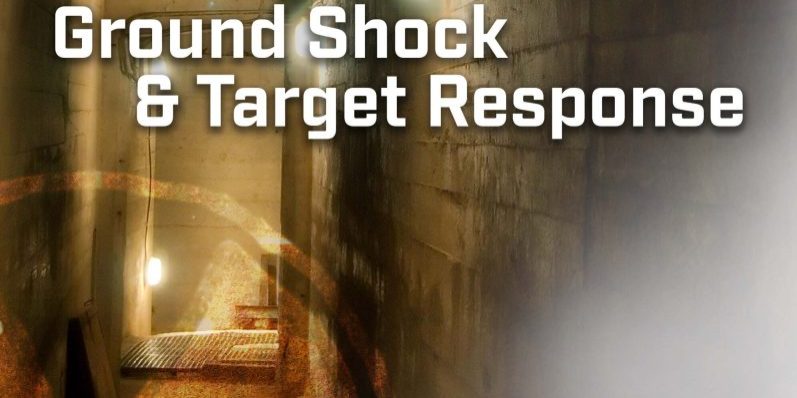Strategic Nuclear Forces are the backbone of U.S. nuclear deterrence strategy and undoubtedly will remain so over the long term. However, there is an ongoing national security need to enhance nuclear test monitoring capabilities.
Nuclear treaty verification and hard target defeat are crucial application areas of nuclear weapons effects. Both technical areas heavily rely on computational geophysical modeling and simulation. From a treaty verification perspective, effort is underway to generate synthetic seismograms by coupling shock propagation in geologic media from source region to long-range teleseismic regions. The long-range purpose is to study the influence of near-source region geology on explosive source detection and ground shock propagation.
Improvements in ground shock modeling are also important to the hard and deeply buried target application. A special consideration for HDBT is the coupling of energy from the weapon to the ground. Coupling efficiency is the fraction of the total weapon yield converted to kinetic energy of downward-moving solid or non-vaporized ground material. The amount of energy coupled to
the ground is strongly dependent on the weapon’s actual height of burst or depth of burst, as well as on nuclear design details (i.e., yield-to-mass ratio, fission fractions, etc.). Geologic properties also play a role.
Many important HDBTs are beyond the reach of explosive penetrating weapons and are at only risk of destruction with nuclear weapons. [1]
Current experience and empirical predictions indicate that earth-penetrator weapons cannot reach to depths required for total containment of the effects of a nuclear explosion; however, shallow penetration (up to about 3 meters) captures most of the advantage associated with the coupling of ground shock. As the survivability risk to the penetrator increases with increasing penetration depth, a better understanding of energy coupling is important for improved HDBT protective designs and vulnerability assessments.
Another important modeling consideration for HDBT is failure prediction. Current methods rely mostly on continuum finite element models, and thus are intrinsically incapable of predicting structural failure. Rather, damage to and collapse of underground structures is based on heuristic reasoning (e.g., tension strains and velocity vectors in the vicinity of free surfaces) at late times in
the simulation. Newer finite element models techniques, such as the mesh-free X-FEM method that represent internal (or external) boundaries (e.g., holes, inclusions or cracks) without requiring the mesh to conform to these boundaries, appear to be a promising approach to improving damage and failure prediction for HDBTs.
Several years ago, the Defense Threat Reduction Agency undertook a multi-year Advanced Concept Technology Demonstration program on hard target kill to validate numerical simulation tools for vulnerability assessment of HDBTs, which led to unexpected results. Rather than validating the efficacy of existing simulation tools, the program highlighted the shortcomings of these tools, as well as the complexity of modeling geologic materials and the particular difficulty of characterizing large-scale faulted media.
In January 2010, DTRA sponsored a workshop on ground shock in faulted media to identify and evaluate various approaches for advanced modeling of low-strength interfaces representative of faults and other discontinuities in hard rock masses, and the effects of these discontinuities on interpretation of seismic measurements for targeting and treaty verification applications. Large
rock masses are an important consideration to HDBTs, as they strongly influence the propagation of shock waves emanating from explosions, causing directional channeling of energy and giving rise to asymmetric flows. Understanding these effects, and being able to model them with confidence is important to interpreting seismic signals from explosions, and to assessing the vulnerability
of HDBTs to attacks.
The findings and recommendations of the workshop covered four areas: dealing with uncertainties; improving modeling tools; simulation verification; and validation experiments. These findings focused on both targeting and treaty verification applications, although priorities are not necessarily the same for each. Of paramount concern was the need to deal with uncertainties in a more quantified manner than previously performed. This will require extensive sensitivity studies over a range of geologic conditions, which in turn requires probabilistic site models that do not currently exist and improvements to the computational tools that make such studies practical.
With these considerations in mind, the workshop report recommended that the highest priority undertaking is to quantify the influence of near-source region geologic conditions on ground shock propagation in faulted media as it effects both targeting and treaty verification applications. [2]
For targeting applications, the need is to determine geologic conditions that are dominant for weapons effects predictions (ground shock and target response) and can be sufficiently well defined for typical denied hard target sites. For the treaty verification community, the comparable need is to quantify the conditions under which near-explosion source region geology influences seismic signal detection and discrimination at all ranges of interest.
From a target vulnerability assessment perspective, improved rock failure predictions require implementing mesh-independent technology in simulation codes to model fractures and joints. It also is important to introduce automated data management from model generation through post-processing to make large-scale simulations practical for both targeting and treaty verification applications. Over the longer term, there is a need to formulate and adopt an Uncertainty Quantification formalism, as the Department of Energy laboratories have done, to characterize uncertainties in an operationally meaningful way.
References
1. Defense Science Board report,” Effects of Nuclear Earth-Penetrator and Other Weapons,” 2005, National Academies Press (accessed August 5, 2016)
2. Ground Shock in Faulted Media (GSFM) Workshop Final Report, DTRA-TR-10-27, December 2010 (accessed August 5, 2016)


